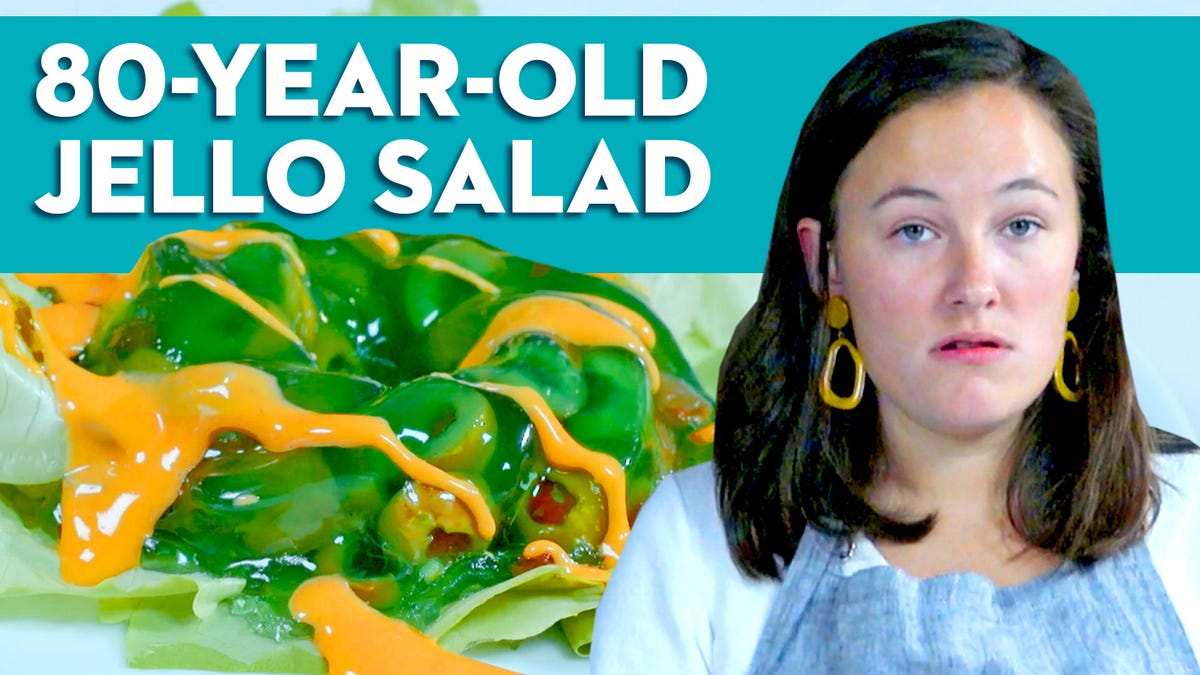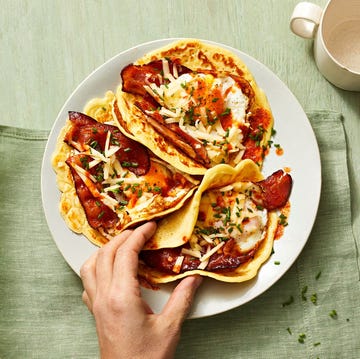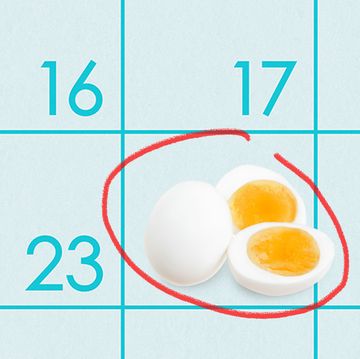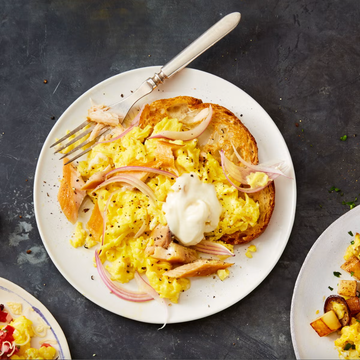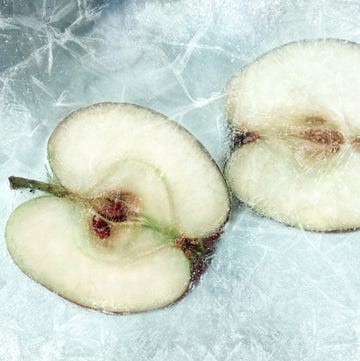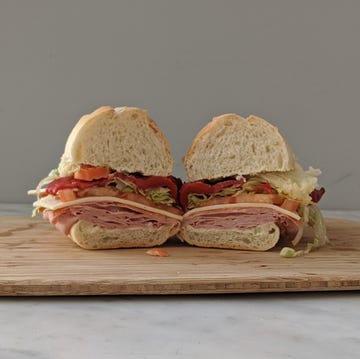Al dente: Pasta cooked until just barely tender, but still has a slight bite to it. From the Italian "to the tooth."
Bake: To cook food in an oven, surrounded by dry heat 375°F and below; called roasting when the oven temperature is above 375°F.
Baking powder: A combination of baking soda, an acid such as cream of tartar and a starch or flour (moisture absorber). Most common type is double-acting baking powder, which acts when mixed with liquid and again when heated.
Baking soda: The main ingredient in baking powder, baking soda is also used when there is acid (buttermilk or sour cream, for example) in a recipe. Always mix with other dry ingredients before adding any liquid, since leavening begins as soon as soda comes in contact with liquid.
Barbecue: Can have many meanings. It can refer to a method of cooking food on a grill over charcoal (or gas), a meal that is eaten outdoors or a type of sauce.
Baste: To moisten for added flavor and to prevent drying out while cooking, such as brushing or spooning melted butter, pan juices or sauces on foods (often meats and poultry).
Batter: An uncooked pourable mixture usually made up of flour, a liquid and other ingredients. Examples are pancake, cake and brownie batters.
Beat: To stir ingredients very quickly to make a mixture smooth, using a whisk, spoon or electric mixer.
Blanch: To cook briefly in boiling water to seal in flavor and color; usually used for vegetables or fruit, to prepare for freezing and to ease skin removal (for example, tomatoes are often blanched to remove their skins before making tomato sauce).
Blend: To thoroughly combine two or more ingredients, either by hand with a whisk or spoon or with an appliance such as a blender or electric mixer.
Boil: To cook in bubbling water that has reached 212°F.
Bone: To remove bones from poultry, meat or fish.
Bouquet garni: A tied bundle of herbs — usually parsley, thyme and bay leaves — that is added to flavor soups, stews and sauces while cooking but removed before serving.
Braise: To cook first by browning, then gently simmering in a small amount of liquid over low heat in a covered pan until tender.
Bread: To coat with crumbs before cooking. The crumbs can be made from bread, crackers, cornmeal, cereal, chips, nuts or a combination.
Broil: To cook on a rack under or over direct heat, usually in an oven.
Brown: To cook over high heat, usually on top of the stove, to brown food.
Caramelize: To heat sugar until it liquefies and becomes a syrup ranging in color from golden to dark brown. Or to achieve these colors on the surface of the food you are cooking.
Core: To remove the seeds or tough woody centers from fruits and vegetables.
Cream: To beat ingredients, usually sugar and a fat, until smooth and fluffy. Also the butterfat portion of milk.
Cube: To cut food into cubes.
Cut in: To distribute a solid fat in flour using a cutting motion, with a pastry blender (or two butter knives used scissors-fashion), until divided evenly into tiny pieces. Usually refers to making pastry.
Deep-fry: To cook by completely immersing food in hot fat.
Deglaze: To loosen brown bits from a pan by adding a liquid, then heating while stirring and scraping the pan.
Dice: To cut food into very small (1/8- to 1/4-inch) cubes or pieces.
Dollop: A spoonful of soft food such as whipped cream or mashed potatoes.
Dot: To scatter bits of an ingredient, usually butter, over food. You can also dot with other ingredients, such as cream cheese, nuts or chocolate.
Dredge: To cover or coat uncooked food, usually with flour, cornmeal or breadcrumbs.
Dress: To coat foods such as salad with a sauce. Also, to clean fish, poultry or game for cooking.
Drippings: Juices and fats rendered by meat or poultry that fall to the bottom of the pan during cooking, usually roasting.
Drizzle: To pour melted butter, oil, syrup, melted chocolate or other liquid back and forth over food in a fine stream.
Dust: To coat lightly with confectioners' sugar or cocoa (cakes and pastries) or another powdery ingredient, usually through a fine-mesh sieve.
Fillet: A flat piece of boneless meat, poultry or fish. Also, to cut the bones from a piece of meat, poultry or fish.
Fines herbes: A mixture of herbs (traditionally parsley, chervil, chives and tarragon) used to flavor fish, chicken and eggs.
Flambé: To drizzle liquor over a food while it is cooking, then when the alcohol has warmed, ignite the food just before serving.
Flute: To make decorative grooves. Usually refers to pastry. Can also refer to an elongated stemmed glass to hold champagne and other sparkling beverages.
Fold: To incorporate light ingredients such as whipped cream, beaten egg whites, shredded cheese or herbs with a heavier mixture, using a gentle over-and-under motion, usually with a rubber spatula.
Glaze: To coat foods with glossy mixtures such as jellies, syrups, melted chocolate or sauces.
Grate: To rub foods, such as carrots, cheese, chocolate and nutmeg, against a serrated surface to produce shredded or fine bits.
Grease: To rub the interior surface of a cooking dish or pan with a fat to prevent food from sticking to it.
Grill: To cook food on a rack under or over direct heat, as on a barbecue or in a grill pan.
Grind: To break down food into tiny particles using a grinder, a mortar and pestle or a food processor.
Julienne: To cut into long, thin matchstick-like strips.
Knead: To bring dough together with hands or in a mixer to form a pliable mass.
Macerate: To soak in a flavored liquid; usually refers to fruit, to help release its juices.
Marinate: To soak in a flavored liquid; usually refers to meat, poultry or fish but can also refer to vegetables, especially artichokes, olives and peppers.
Mince: To cut into tiny pieces, usually with a knife. Also referred to as “finely chopped.”
Parboil: To partially cook by boiling. Usually done to prepare food for final cooking by another method.
Poach: To cook gently over very low heat in barely simmering liquid just to cover.
Purée: To mash or grind food until completely smooth, usually in a food processor, blender or food mill.
Reduce: To thicken a liquid and concentrate its flavor by cooking.
Render: To cook fatty meat or poultry—such as bacon or duck—over low heat to obtain drippings.
Roast: To cook a large piece of meat, poultry or vegetables uncovered with dry heat in an oven.
Sauté: To cook food in a small amount of fat in a skillet over relatively high heat, stirring often or occasionally.
Scald: To heat liquid (usually milk) almost to a boil until bubbles begin to form around the edge.
Sear: To brown the surface of meat by quick-cooking over high heat in order to seal in the meat's juices.
Shred: To cut food into narrow strips with a knife or a grater.
Simmer: To cook in liquid just below the boiling point; bubbles form but do not burst on the surface of the liquid.
Skim: To remove surface foam or fat from a liquid.
Steam: To cook food on a rack or in a steamer set over boiling or simmering water in a covered pan.
Steep: To soak in hot liquid to extract the essence—e.g., tea.
Stew: To cook covered over low heat in a liquid.
Stir-fry: To quickly cook small pieces of food over high heat, stirring constantly.
Truss: To tie whole poultry or roast with string and sometimes skewers so it will hold its shape during cooking.
Whip: To beat food with a whisk or mixer to incorporate air and produce volume.
Whisk: To beat ingredients (such as heavy or whipping cream, eggs, salad dressings or sauces) with a fork or whisk to mix, blend or incorporate air.
Zest: The outer, colored part of the peel of citrus fruit. Also to remove the zest using a Microplane or other grating tool.

